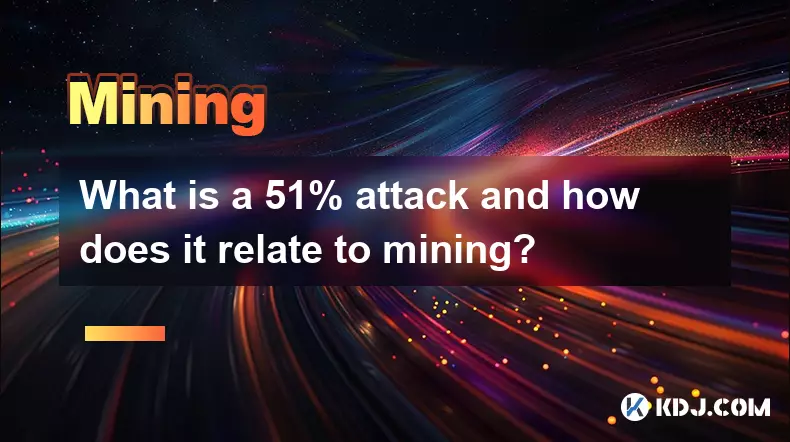-
 Bitcoin
Bitcoin $110000
-1.38% -
 Ethereum
Ethereum $4353
-1.95% -
 XRP
XRP $2.834
-1.20% -
 Tether USDt
Tether USDt $1.000
0.02% -
 BNB
BNB $847.1
-1.38% -
 Solana
Solana $206.1
-2.42% -
 USDC
USDC $0.9999
0.02% -
 Dogecoin
Dogecoin $0.2144
-1.54% -
 TRON
TRON $0.3378
-0.74% -
 Cardano
Cardano $0.8127
-2.69% -
 Chainlink
Chainlink $23.06
-2.34% -
 Hyperliquid
Hyperliquid $45.24
-0.77% -
 Ethena USDe
Ethena USDe $1.001
0.03% -
 Sui
Sui $3.285
-2.46% -
 Bitcoin Cash
Bitcoin Cash $588.1
-1.85% -
 Stellar
Stellar $0.3577
-1.93% -
 Avalanche
Avalanche $24.66
-2.52% -
 Hedera
Hedera $0.2129
-3.80% -
 Cronos
Cronos $0.2658
-2.11% -
 UNUS SED LEO
UNUS SED LEO $9.522
0.19% -
 Litecoin
Litecoin $110.6
-1.80% -
 Toncoin
Toncoin $3.122
-1.79% -
 Shiba Inu
Shiba Inu $0.00001212
-2.78% -
 Polkadot
Polkadot $3.770
-2.40% -
 Uniswap
Uniswap $9.346
-2.95% -
 Dai
Dai $0.9999
-0.02% -
 Monero
Monero $269.5
0.04% -
 Aave
Aave $319.6
-1.91% -
 Ethena
Ethena $0.6907
-5.62% -
 Bitget Token
Bitget Token $4.891
-3.49%
What is a 51% attack and how does it relate to mining?
A 51% attack occurs when an entity controls over half a blockchain’s mining power, enabling transaction reversal and double-spending, especially on smaller, less secure networks.
Sep 04, 2025 at 04:36 pm

Understanding the 51% Attack in Blockchain Networks
1. A 51% attack occurs when a single entity or group gains control over more than half of a blockchain network’s mining hash rate. This dominance allows them to manipulate the consensus mechanism, which is typically based on proof-of-work. In such a scenario, the attacker can prevent new transactions from gaining confirmations, reverse transactions they made while in control, and double-spend coins.
2. The security of most decentralized blockchains relies on the assumption that no single miner or mining pool holds a majority of the computational power. When this assumption is violated, the foundational trust model of the blockchain breaks down. Transactions are no longer guaranteed to be immutable, and confidence in the network erodes.
3. While executing a 51% attack is technically challenging and expensive on large networks like Bitcoin, smaller cryptocurrencies with lower hash rates are more vulnerable. The reduced mining competition makes it easier and cheaper for an attacker to amass the necessary computational resources to overpower the network.
4. The attack does not allow the attacker to create new coins out of thin air or steal funds directly from unrelated addresses. What it does enable is the ability to exclude or modify the ordering of transactions, which opens the door for fraudulent activity such as double-spending. For example, an attacker could send coins to an exchange, wait for confirmation, withdraw fiat or other assets, and then reverse the original transaction.
5. The mere possibility of a 51% attack affects market perception. If a blockchain is known to be susceptible, investors and users may lose trust, leading to price declines and reduced adoption. Exchanges may even delist coins that have experienced or are at high risk of such attacks.
The Role of Mining in Network Security
1. Mining is the process by which transactions are verified and added to the blockchain. Miners compete to solve complex cryptographic puzzles, and the first to solve it gets to add a new block and is rewarded with newly minted coins and transaction fees. This process secures the network by making it costly to alter past transactions.
2. The distributed nature of mining ensures that no single party can easily take control. As long as mining power is spread across many independent participants, the likelihood of any one entity gaining majority control remains low. This decentralization is a core principle of blockchain security.
3. Mining pools allow smaller miners to combine their computational resources and increase their chances of earning rewards. However, this pooling can lead to centralization risks if a few large pools dominate the network. Some pools have temporarily exceeded 50% of the hash rate on smaller blockchains, raising red flags.
4. The cost of mining equipment, electricity, and maintenance acts as a deterrent against malicious behavior. Rational miners are incentivized to follow the rules because attacking the network could devalue the very asset they are working to earn. However, in cases where the potential gain from an attack outweighs the cost, this economic incentive may fail.
5. Networks with lower mining activity are inherently less secure. A blockchain with limited hash power requires fewer resources to overpower, making it an attractive target. This is why many smaller altcoins are more frequently subjected to 51% attacks compared to major cryptocurrencies.
Historical Examples and Real-World Implications
1. In 2018, the cryptocurrency Verge (XVG) suffered a 51% attack that resulted in the unauthorized creation of over 35 million new coins. The attacker exploited weaknesses in the mining algorithm and used substantial hash power to rewrite the blockchain, causing significant financial and reputational damage.
2. Ethereum Classic (ETC) has experienced multiple 51% attacks, with notable incidents in 2019 and 2020. During these events, large amounts of ETC were double-spent, and exchanges like Coinbase and Binance temporarily halted deposits and withdrawals to mitigate risk.
3. The Bitcoin Gold (BTG) network was hit by a 51% attack in 2018 and again in 2020, leading to the theft of millions of dollars worth of coins. These attacks highlighted the vulnerability of forked blockchains that inherit Bitcoin’s code but operate with significantly less mining security.
4. Some attackers have used hash rate rental services to temporarily gain majority control without owning the hardware. Platforms like NiceHash allow users to lease mining power, lowering the barrier to launching a 51% attack on smaller chains.
5. These incidents have prompted discussions around alternative consensus mechanisms, such as proof-of-stake, which aim to reduce reliance on energy-intensive mining and make attacks more economically prohibitive through staking penalties.
Frequently Asked Questions
What prevents a 51% attack on Bitcoin?The immense hash rate required to overpower Bitcoin’s network makes such an attack prohibitively expensive. The cost of acquiring and operating enough mining hardware to exceed 50% of the global hash rate far outweighs any potential profit from double-spending.
Can a 51% attack destroy a cryptocurrency?While it cannot erase the entire blockchain, a successful attack can severely damage trust in the network. If users and exchanges lose confidence, trading may halt, and the coin’s value could collapse, effectively rendering it unusable.
Do proof-of-stake blockchains face 51% attacks?They face similar risks but under different mechanics. In proof-of-stake, an attacker would need to control over 50% of the staked tokens. However, such an attack would likely trigger slashing penalties and coordinated community responses, making it less feasible.
How can users protect themselves from 51% attacks?Users should wait for a sufficient number of confirmations before considering a transaction final, especially for high-value transfers. Exchanges and wallets often enforce longer confirmation times for smaller, more vulnerable blockchains.
Disclaimer:info@kdj.com
The information provided is not trading advice. kdj.com does not assume any responsibility for any investments made based on the information provided in this article. Cryptocurrencies are highly volatile and it is highly recommended that you invest with caution after thorough research!
If you believe that the content used on this website infringes your copyright, please contact us immediately (info@kdj.com) and we will delete it promptly.
- Dogecoin's Key Indicator Flashes Buy Signal Amidst Market Drop: A New York Minute
- 2025-09-04 22:25:15
- Gold, Trump, and the Flight to Safety: What's Driving the Market in 2025?
- 2025-09-04 22:25:15
- BlockchainFX (BFX): The New Exchange Token Rivaling BNB and Hyperliquid?
- 2025-09-04 20:30:11
- Cardano Price, Pi Coin, Remittix Presale: Navigating the Crypto Landscape
- 2025-09-04 21:05:11
- Polygon, Blockchain, and India: A Web3 Powerhouse
- 2025-09-04 20:30:11
- Justin Sun, HTX, and High-Yield Products: A Deep Dive into Crypto's Latest Trends
- 2025-09-04 20:45:12
Related knowledge

Why do mining pools have fees?
Sep 04,2025 at 09:18pm
Understanding the Role of Mining Pools in Cryptocurrency Networks1. Mining pools aggregate the computational power of multiple miners to increase the ...

What is a 51% attack and how does it relate to mining?
Sep 04,2025 at 04:36pm
Understanding the 51% Attack in Blockchain Networks1. A 51% attack occurs when a single entity or group gains control over more than half of a blockch...

Can I mine and game on the same GPU?
Sep 04,2025 at 09:00pm
Running Mining and Gaming Simultaneously on One GPU1. Sharing a single GPU between cryptocurrency mining and gaming is technically possible but comes ...

What is the role of a stratum server in pool mining?
Sep 04,2025 at 06:01pm
Understanding the Stratum Server in Cryptocurrency Mining1. The stratum server acts as a communication bridge between mining pools and individual mine...

How to sell the crypto you have mined?
Sep 04,2025 at 03:54pm
Choosing the Right Exchange Platform1. Selecting a reliable cryptocurrency exchange is the first critical step in selling mined crypto. Platforms like...

How does merge mining work?
Sep 04,2025 at 07:36pm
Merge Mining: A Dual-Chain Approach1. Merge mining allows miners to simultaneously secure two or more blockchains using the same computational power. ...

Why do mining pools have fees?
Sep 04,2025 at 09:18pm
Understanding the Role of Mining Pools in Cryptocurrency Networks1. Mining pools aggregate the computational power of multiple miners to increase the ...

What is a 51% attack and how does it relate to mining?
Sep 04,2025 at 04:36pm
Understanding the 51% Attack in Blockchain Networks1. A 51% attack occurs when a single entity or group gains control over more than half of a blockch...

Can I mine and game on the same GPU?
Sep 04,2025 at 09:00pm
Running Mining and Gaming Simultaneously on One GPU1. Sharing a single GPU between cryptocurrency mining and gaming is technically possible but comes ...

What is the role of a stratum server in pool mining?
Sep 04,2025 at 06:01pm
Understanding the Stratum Server in Cryptocurrency Mining1. The stratum server acts as a communication bridge between mining pools and individual mine...

How to sell the crypto you have mined?
Sep 04,2025 at 03:54pm
Choosing the Right Exchange Platform1. Selecting a reliable cryptocurrency exchange is the first critical step in selling mined crypto. Platforms like...

How does merge mining work?
Sep 04,2025 at 07:36pm
Merge Mining: A Dual-Chain Approach1. Merge mining allows miners to simultaneously secure two or more blockchains using the same computational power. ...
See all articles

























































































